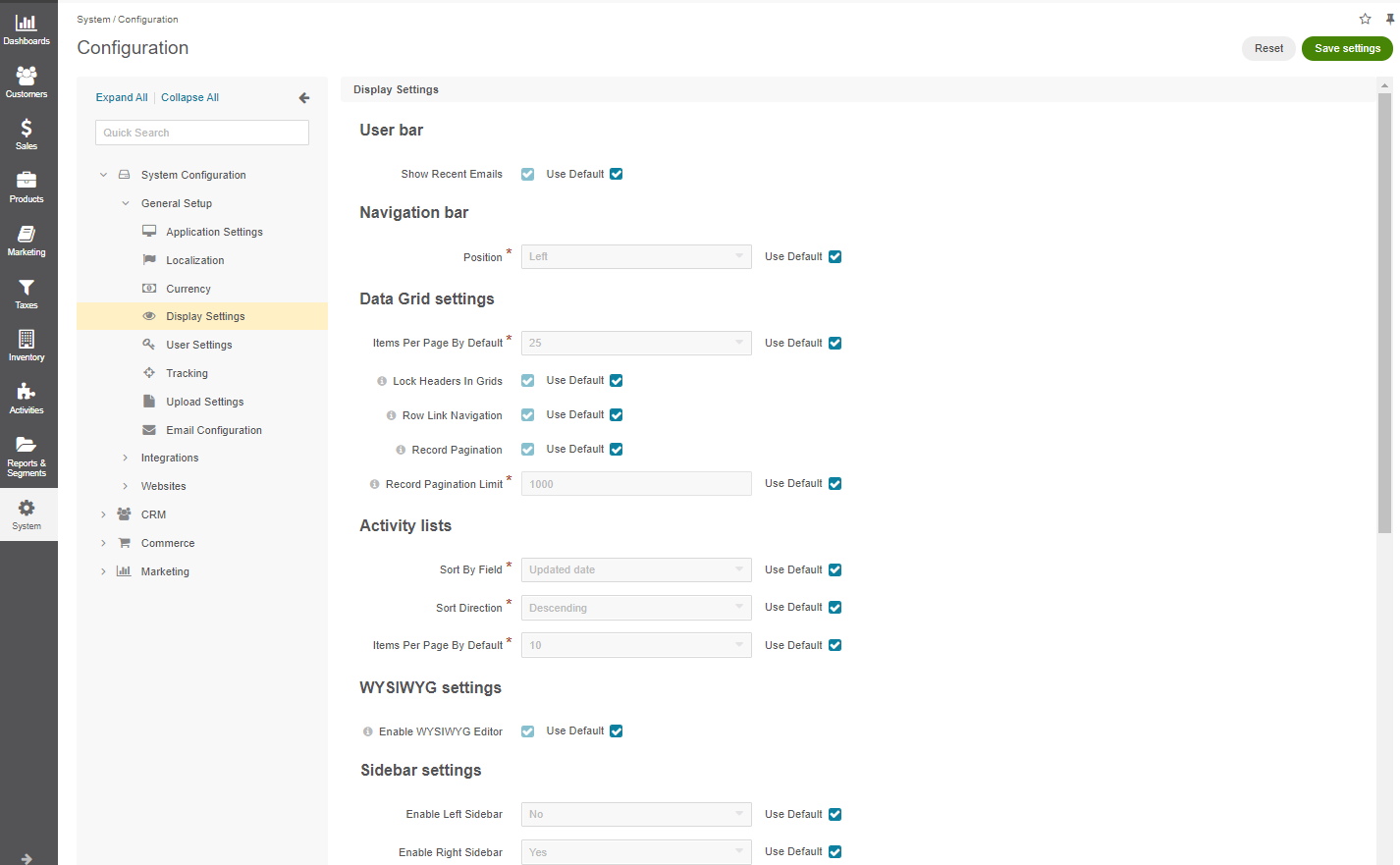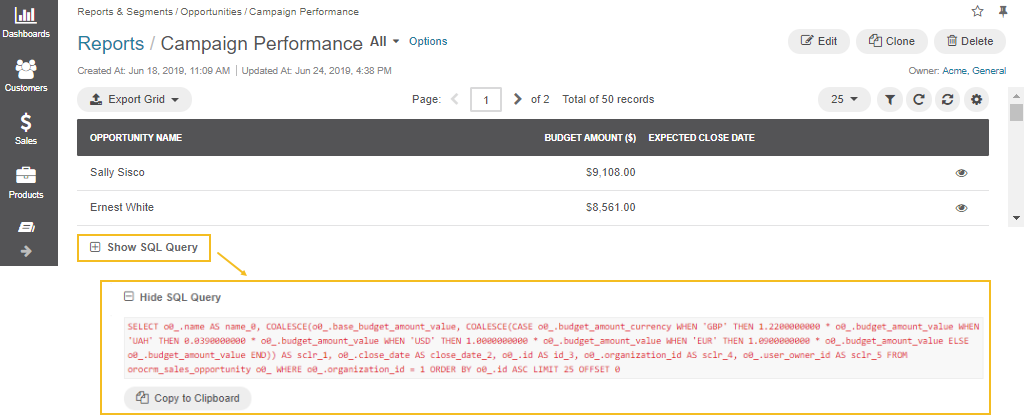Important
You are browsing upcoming documentation for version 6.1 of OroCommerce, scheduled for release in 2025. Read the documentation for version 6.0 (the latest LTS version) to get up-to-date information.
See our Release Process documentation for more information on the currently supported and upcoming releases.
Configure Global Display Settings
In this section, you can define a number of display-related options to be applied to the Oro application.
Hint
The settings are available on four levels: globally, per organization, per website, and per user.
Note
See a short demo on how to set display settings in your Oro application, or continue reading the guidance below.
To open display settings:
Navigate to System > Configuration in the main menu.
Select System Configuration > General Setup > Display Settings in the menu to the left.

In the User Bar section, configure the setting:
Show Recent Emails — Enable the checkbox to display the recent emails on the user bar. They will appear next to the user name.

In the Navigation bar section, configure the setting:
Position — Select whether the OroCommerce main menu will be positioned at the top of the page or on its left.
In the Data Grid Settings section, configure the options to display all the record lists (grids) in the back-office:
Items Per Page By Default — Defines the number of items displayed on one page of the grid by default (every time you open the grid).
Lock Headers In Grids — Ensures that grid headers stay visible while you scroll.
Row Link Navigation — Enables the ability for the row in the grid to behave like a native link. By right-clicking on the item in the grid, you can open it in a new tab/window.
Record Pagination — Enables the user navigation to the previous or next grid record from a record view page.

Record Pagination Limit — Defines a maximum number of records available for the record pagination.
In the Activity Lists section, configure the options to display activities.
Sort By Field — Select whether to sort activity records by the date when they were created or by the date when they were updated for the last time.
Sort Direction — Select whether to sort records in the ascending or descending direction.
Items Per Page By Default — Select how many records will appear on one page of the activity grids.
In the WYSIWYG Settings section, enable the WYSIWYG Editor setting:
Enable WYSIWYG Editor — Select this checkbox to enable text formatting tools for emails, notes and comments.

8. In the Sidebar Settings section, enable or disable the left and/or right sidebar to keep your sticky notes and task lists:
Enable Left Sidebar — Select Yes to enable the user to see and utilize the left sidebar.
Enable Right Sidebar — Select Yes to enable the user to see and utilize the right sidebar.
In the Tag Settings section, specify the taxonomy colors available in the system.

In the Calendar Settings section, specify the colors available to manage calendars:
Calendar Colors — A set of colors available for color coding different organization calendars.
Event Colors — A set of colors available for color coding different organization events.
To change any color in the set:
Click it. The color picker opens.
Drag and drop a dot on the color picker wheel to select a new color.
Adjust the color brightness by dragging the level on the shades bar.

In the Map Settings section, configure the map preview settings:
Enable Map Preview — Select whether to show the location on a map when a customer views an address in the storefront. This option does not affect maps in the back-office. Please be aware that a valid Google API key is required to display maps in the storefront. Please see the back-office settings for more information.

In the Reports Settings section, configure the following settings:
Group Same-Entity Conditions Within Condition Groups — Select this checkbox to enable report generation for an entity only if the values match all the field conditions queries within a conditions group. This means that if two conditions (A and B) are applied in a condition group, the report will be generated only when both of them are satisfied. Disable the checkbox to receive the report that would include the values which satisfy the A condition, the B condition, and both.
Display SQL In Reports And Segments — Select this checkbox to enable the user to review the SQL request sent to the system for a report or a segment. This way, users can check if a report has been developed correctly.

This link will only be available if the View SQL query of a report/segment capability has been enabled for the role.
In the Window Settings section, configure the following settings:
Quick Create Actions — Select the preferred way to display the quick creation buttons form. The buttons with quick actions appear on the customer, customer user, and customer group view pages. When clicked, the form can be displayed in a new browser tab, a popup dialog window, or replace the current page.
